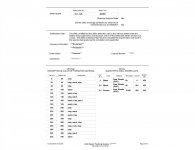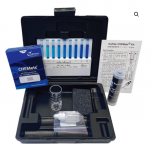- Oct 25, 2015
- 5,812
- Pool Size
- 28000
- Surface
- Plaster
- Chlorine
- Salt Water Generator
- SWG Type
- CircuPool RJ-60 Plus
Folks,
My well water is turning out to be a challenge. Hardness is 10 gr/gal, Sulfide is 1 ppm, tannin is about .5 ppm based on color I'm waiting for lab test result, pH is 7.3. Hardness was easy to address with a standard cation exchange resin to less than 1 gr/gal. ^^^Edit: also well tested negative for bacterial^^^ The rest isn't so successful. Here's my status and questions:
Can any of our mad scientist or chemistry experts comment? (@JoyfulNoise, @JamesW or anybody else). I really need to get this solved before I go too far with the pool.
Chris
My well water is turning out to be a challenge. Hardness is 10 gr/gal, Sulfide is 1 ppm, tannin is about .5 ppm based on color I'm waiting for lab test result, pH is 7.3. Hardness was easy to address with a standard cation exchange resin to less than 1 gr/gal. ^^^Edit: also well tested negative for bacterial^^^ The rest isn't so successful. Here's my status and questions:
- Sulfur drops by 90% to .1 ppm. Unfortunately, this still has a distinct sulfur odor. I'm using air injection with a standard Fleck 5600 sxt control head and catalytic carbon. Is 90% reduction all I can expect? If so, will a second unit get the same % reduction that may then yield undetectable level? What else can I try if that's not the case. I had planned on Katalox previously but it was impossible to find and most people around here use standard catalytic carbon. Any other choices other than more difficult/costly peroxide treatments?
- Tannin level is TBD but based on color (very light yellow, not brown or red). Iron level is not detectable. Just to be sure it's not iron I treated a sample with Iron Out and had no impact. The tannin also has a little bit of a musty odor that doesn't help.
Can any of our mad scientist or chemistry experts comment? (@JoyfulNoise, @JamesW or anybody else). I really need to get this solved before I go too far with the pool.
Chris



